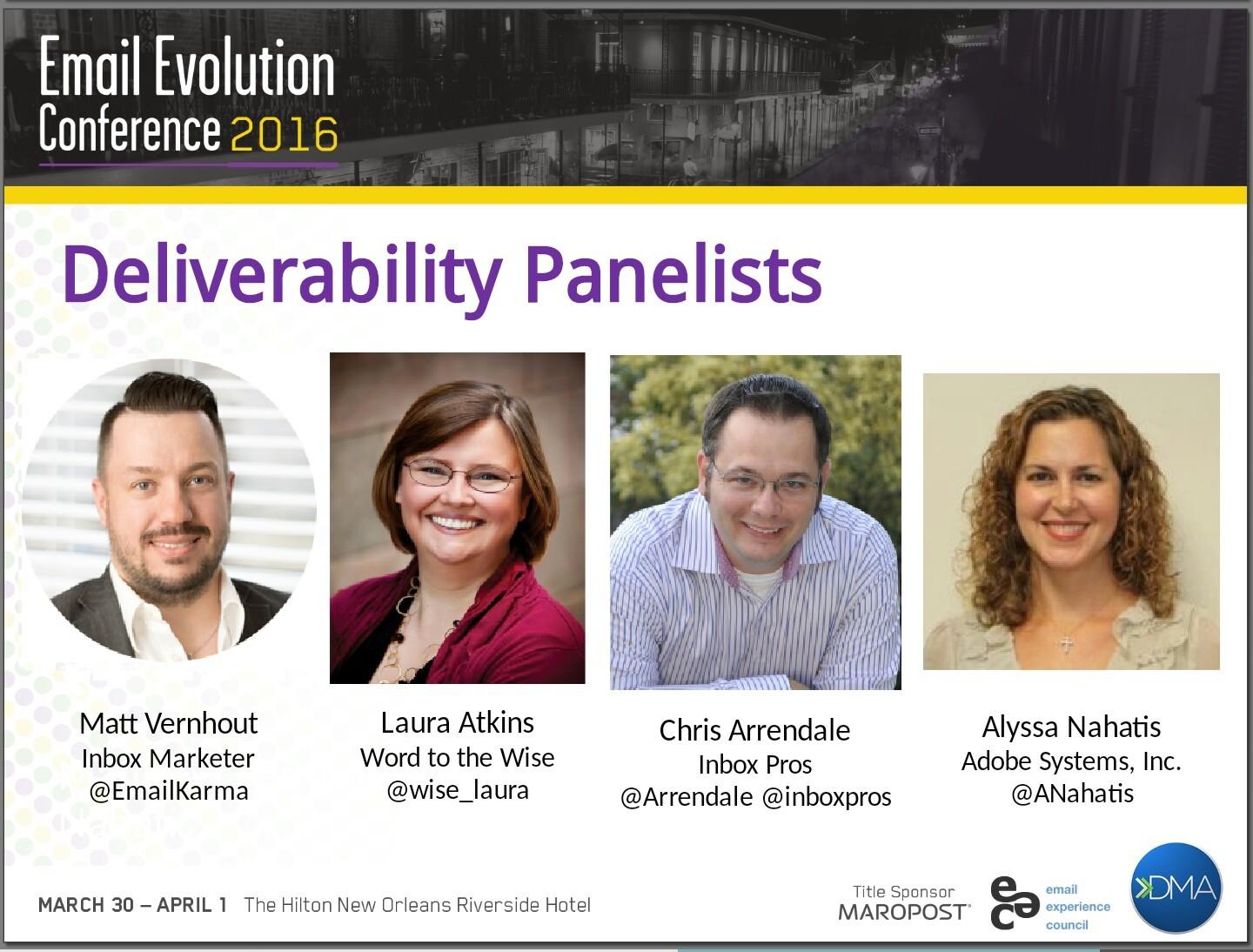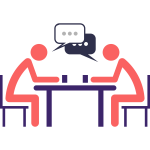I had the privilege to be a part of two panels at EEC16, with some of the best folks in the business.
The first panel was “Everything You Ever Wanted to Know About Deliverability, but Were Afraid to Ask.” 
We had a lot of great audience questions.
The first question, which was awesome (and I don’t think planted) was: “What is the most important thing we can do to improve our deliverability?”
All of us had really similar answers: pay attention to your data and your acquisition. Deliverability starts with your data: good data = good deliverability, poor data = poor deliverability. How you acquire addresses is vital to any email program.
I’ve had dozens of sales calls with potential clients over the years. Most of them tell me lots of stuff about their marketing program. I hear details of engagement, data hygiene, response rates, CTRs, bounce handling. But very, very few people spontaneously tell me how they’re acquiring addresses. That’s so backwards. Start with acquiring addresses the right way. Deliverability is all in the acquisition step. Of course, you need to nurture and care for those subscribers, sent the right message at the right time and all the good things we talk about. None of that matters if you don’t start with good data.
Another question was about spamtraps. The panel had me take this one. I’ve written extensively about spamtraps and what they do and what they mean. The important thing to remember, though, is that a spamtrap is a signal. If you have spamtraps on your list, then there is a problem with your data acquisition. Somehow, people are getting addresses that do not belong to them on the list.
Spamtraps are a problem, but not for the reasons many people think they are problems. Folks get upset when their mail is blocked because of spamtraps. Blocking isn’t the only damage, though. For every spamtrap on a list that is one less responsive addresses. It’s one customer who you are not reaching. If there are spamtraps on a list, it’s likely there are deliverable addresses that don’t belong to your customers, too. These recipients are going to view that mail as spam. They didn’t sign up, they didn’t ask for it, they don’t want it. They’re going to complain, hurting your reputation. Too many of these recipients and delivery will suffer.
Spamtraps are a warning that something is wrong. That something is usually your data acquisition process.
Questions went on through the session and ranged from things like how to get mail to B2B inboxes and is there value in certification. We also had some insightful questions about authentication.
The second panel I was on was the closing keynote panel: “ISP Postmasters & Blacklist Operators: Defending Consumer Inboxes.�” This was where I got to show my incoming mail chops, a bit. I was a last minute fill in for the panel and I am honored that Dennis and Len thought I could represent the incoming mail folks. It’s not like I’m out there writing filters, but I do pay attention to what the filter operators are saying and doing.
I think it is important for marketers to get a feel for what’s really going on at the ISPs. They aren’t trying to stop real mail, they’re trying to stop malicious mail. Matt from Comcast talked a lot about how marketers and ISPs share customers and the ISPs are trying to keep those customers safe and happy. Jaren discussed some of the decision making processes his company goes through deciding whether to err on the side of letting spam through or filtering good mail. Tom discussed how his blocklist works with some brands to help stop phishing attacks against those brands.
Overall, I think the session was a great success. The conference was great and I am looking forward to going back next year.
Were you at either panel? What did you think?
+eddc
Read More

